
The fiber-rich cereal grain barley can be a healthful addition to balanced meals. Cooked barley has a chewy consistency and a nutty taste. Barley can be served as a side dish, cooked in other dishes or made into a breakfast cereal. Barley is often hulled or pearled, which means it has been polished to remove part of the hull. Barley can also be flattened into flakes or toasted and cracked into grits.
Servings and Calories
One serving of barley is approximately 1 cup, or 157 grams of cooked grain. One cup of barley has 193 calories and water makes up 108 grams of barley's total weight. Barley is considered a whole grain food. The U.S. Department of Agriculture recommends that at least half of all grain products consumed each day should be whole grains.
Macronutrients
Barley has 44 grams of carbohydrate in a single serving, including 6 grams of fiber. One cup of barley contains 4 grams of protein and 1 gram of fat. Barley has no saturated fat or cholesterol and only 5 milligrams of sodium.
Micronutrients
Barley has 16 percent of the recommended daily intake of niacin, or 3.2 milligrams. It also contains 6 percent of the recommended intake for folate, or 25.1 micrograms. Other vitamins in barley include choline, pantothenic acid, thiamine, riboflavin and vitamins A, K, B-6 and B-12. Barley also contains the minerals calcium, manganese, magnesium, phosphorus, selenium, potassium, zinc, copper and iron.
Health Benefits
The fiber in barley helps promote digestion and reduces the risk of colon cancer. Barley might also lower cholesterol levels and protect against cardiovascular disease. Like all whole grain products, barley can help keep blood pressure low and reduce the risk of Type 2 diabetes when consumed regularly. Barley is more effective at regulating insulin and glucose responses than whole oats. When consumed as part of a diet containing other whole grains, barley can contribute to a reduced risk of obesity, atherosclerosis, ischemic stroke and overall mortality.
Glycemic Index
Pearled barley has the lowest glycemic index of all of the common cereal grains, including wheat, rye and oats. The glycemic index measures how much 100 grams of the food will raise blood sugar in comparison to the rise in blood glucose when pure sugar is ingested. The glycemic index of boiled pearled barley is 35, according to The Glycemic Index, so it is considered a low glycemic food and an appropriate carbohydrate choice for diabetics or dieters following a low glycemic meal plan.
Related Articles

Benefiber Ingredients
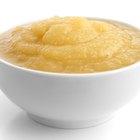
Benefiber as an Appetite Suppressant
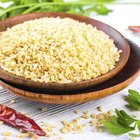
Bulgur Vs. Farro
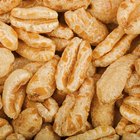
How to Cook With Kamut

How to Cook Couscous With Chicken Broth
Cooking Instructions for Cracked Wheat
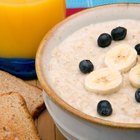
How to Eat Buckwheat Raw

Barley Malt Syrup vs. Brown Rice Syrup
How to Cook Pressed Barley Like Rice

How to Cook Soaked Hulled Barley
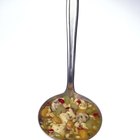
How to Cook Pearl Barley on the Stove

Bulgar Wheat Vs. Couscous

What Is Agave Syrup?

Does Benefiber Lower Cholesterol?
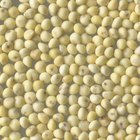
How to Cook Millet Meal

Whole-Wheat Couscous Nutrition Facts

What Is White Oat?

Is Teff Flour Gluten-Free?

How Much Whole Grain Should You Eat a ...

Is Jasmine Rice Naturally White or Is ...
References
Writer Bio
Bridget Coila specializes in health, nutrition, pregnancy, pet and parenting topics. Her articles have appeared in Oxygen, American Fitness and on various websites. Coila has a Bachelor of Science in cell and molecular biology from the University of Cincinnati and more than 10 years of medical research experience.
Photo Credits
Zoonar RF/Zoonar/Getty Images